Flipboard Shows Us the Future of Content

A new iPad app was released this week that might indicate a seismic, revolutionary shift in how users perceive and consume content, as well as offer a true silver bullet for a troubled media industry scrambling for ways to generate revenue.
The Flipboard iPad app aggregates all of your chosen social media environments and displays that content in a slick, easy-to-use "personal magazine." Every time the app is launched, your magazine will show articles, images, links and videos that your friends - and presumably you - find interesting. As said in the video demonstration below, "It always has content you care about."
This is the future of content - personalized, engaging and valuable to consumers. It's not to be taken lightly and will soon go far beyond social media.
Watch the short video below then continue reading as we examine why this is so important to the Web industry.









Implications for Business
Flipboard is a prime example of discretionary content. Users are increasingly (and with greater ease) deciding what they view, how they view it and from whom. As a publisher, this one app highlights major reasons to get involved in or amplify your presence on social media today, and demonstrates why it is so very important to create customized content for users moving forward.
Let's look at this from the user's perspective. If I'm setting up my personal magazine, I could choose to include a favorite Twitter feed, such as @chicagotribune; Facebook Page, such as local radio station WXRT; and my brother's Facebook profile. When I open my Flipboard, I'll see some of the latest breaking news stories complete with accompanying images and video (not just 140 characters with a link) from the Tribune, read about and listen to a sample of a new band coming to town from WXRT, and see video of my niece's first steps taken just seconds ago. That's powerful stuff.
One very important takeaway from all of this is the idea that consumers will start viewing content on a very personal level. That means providing what they want without overwhelming them. Twitter offers one way for publishers to do exactly that. For example, if I run a local news website, I could set up separate Twitter accounts for politics, sports, business, entertainment, etc. Then, a user can pull only those feeds they are interested in to display in their personal magazine. That makes your brand valuable to them without bogging them down with information they don't need or want.
Also, this new level of personalization requires a sense of social media responsibility. For example, a user will not want their personal magazine littered with duplicate updates or endless retweets. This is about engagement - not clicks or pageviews.
At this point, you might be thinking: that's great but this is one app, on one device. For now, that's true. But Flipboard and the iPad are harbingers of what's to come.
So-called "couch computing" is very real. Soon, the market will be inundated with tablet computers and Flipboard or an alternative will be available for every one of them. Most importantly, this Flipboard style of media consumption is in demand. This one app crashed servers just hours after its release due to the flood of consumers attempting to connect to their Facebook and Twitter accounts.
I'm comfortable saying that this app or another iteration of it will be one of the most downloaded of all time. And those millions of users will need content to fill it up.
The Big Picture
The Web is a fractured environment - you have to spend a lot of time and energy reading headlines, clicking links, scanning articles, watching videos and reading updates to get what you want. Flipboard shows us that there is another way. There is a way to get everything you want in one place, in an engaging, entertaining way that offers real value. And this is where the media industry as a whole stands to benefit the most.
Remember micropayments - the idea of charging a few cents for a particular piece of content? With Flipboard (or something like it) charging for piecemeal content is a very real possibility. You could view the latest episode of your favorite television show, the business section from The New York Times, the sports page of the Chicago Tribune and see the latest product releases and daily coupons from your favorite retailer (and be able to purchase), all in one place, for a nominal fee.
I don't know about you, but I would pay for that before paying to access one website - as Rupert Murdoch has suggested. Why would I pay for content I'll never read? Instead, why not pay for only the content I want? Back in the day when I still subscribed to a print newspaper, I would rifle through a six-pound Sunday paper to pull small sections out that I wanted to read, then throw the rest away. That was a tremendous waste of time, energy and resources. And we all know what's happened to the print newspaper business.
If I could open one app and see and hear everything that's important to me? Well, I'd buy that for a dollar. Or more. And, until now, I haven't even mentioned the advertising possibilities.










